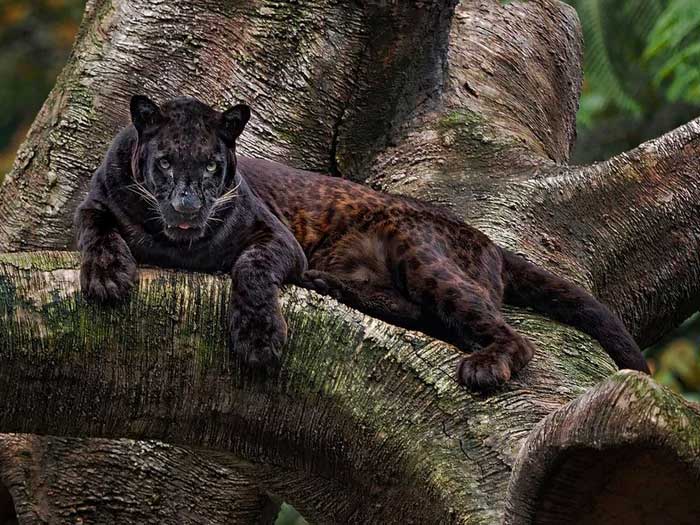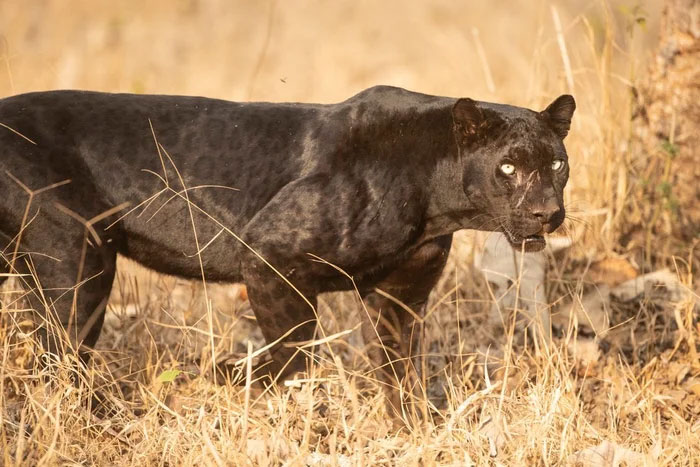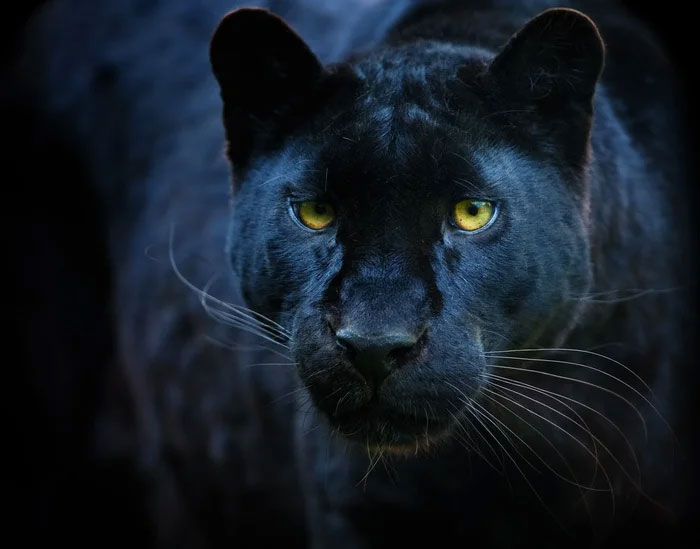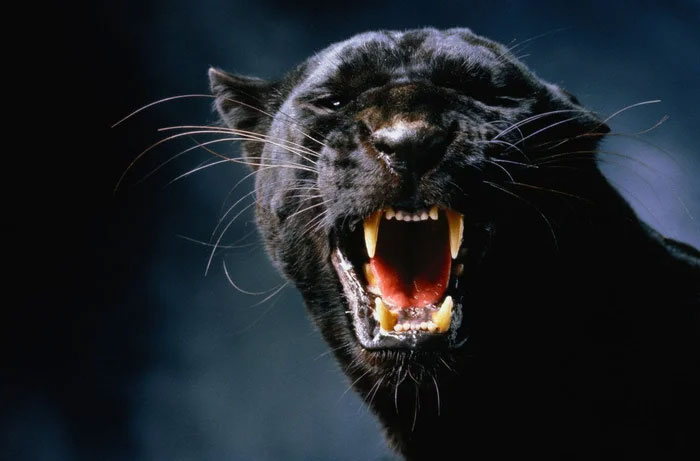Many powers of Marvel superheroes are inspired by the predator of the same name, and Black Panther is one of them. He is inspired by the black leopard found in nature.
The Black Panther is actually a melanistic leopard or jaguar

Approximately 10% of wild leopards are estimated to be black for both species.
Like superheroes, the black panther is essentially a fictional concept. Rather than referring to a specific large cat species, “black panther” is actually a colloquial term used to describe melanistic jaguars (Panthera onca) and leopards (Panthera pardus). These animals have dark fur, specifically a coat that is either completely black or has large black spots on a dark background. The term “panther” itself originates from the genus Panthera, which includes contemporary species such as leopards and jaguars, as well as lions and tigers, which scientists have grouped together due to their similar skull characteristics.
Byron Weckworth, the Director of Conservation Genetics at Panthera, a wild cat conservation organization, states that the melanistic trait in their fur is hereditary and arises from a recessive allele in leopards and a dominant allele in jaguars. While the concentration of melanin may vary between jaguars and leopards born in the same litter, black leopards and jaguars are quite rare. Weckworth says: “Approximately 10% of wild leopards are estimated to be black for both species – jaguars and leopards – due to different environmental pressures and natural selection.”
Black Panthers originate from three different continents

Black Panthers are common in Africa, Asia, and America.
T’Challa hails from the fictional African nation of Wakanda, and some species of leopards also inhabit Africa. However, black panthers are also prevalent in Asia, as well as Africa, where they are primarily found in dark, dense, and humid forest habitats, such as along the mountain ranges in Africa and in the tropical rainforests of South and Southeast Asia. In contrast, American jaguars mainly inhabit wet lowlands, savannas, and rainforests throughout Central and South America, such as along the Amazon River basin.
Black Panthers have retractable claws
One of the notable features of Black Panther’s supersuit is the retractable vibranium claws attached to the fingertips of the suit, which serve as the hero’s primary means of combat while attacking and subduing enemies.

Each claw on the foot of a jaguar or leopard has a tendon attached.
Craig Saffoe, the curator of large carnivores at the Smithsonian Conservation Biology Institute and National Zoo, often compares the retractable claws of black panthers to cutting blades. Each claw on the foot of a jaguar or leopard has a tendon attached. When the tendon is pulled back, the claw retracts. The retractability of the claws ensures they are always protected; if a black panther’s claws are extended for too long, they can become dull or even break. Saffoe states, “If their claws did not retract, they would not be able to grip their prey, and they would not be able to climb trees.”
Black Panthers are excellent swimmers
In Black Panther: Wakanda Forever, the significant antagonist is Namor, the king of an underwater kingdom, and if the sequel takes this hero into the ocean, rest assured that jaguars and leopards are exceptional swimmers. Unlike typical house cats that despise water, jaguars and leopards utilize swamps and rivers to their advantage.
Both of these cats are capable swimmers, but jaguars tend to inhabit wetter environments, making them more likely to enter the water for play, bathing, and relaxation, according to Saffoe. He notes that American jaguars are very well adapted to aquatic and semi-aquatic environments—so if prey escapes into the water, they won’t have much luck.
Black Panthers can “vanish” in the night

Black Panthers often use the cover of night to hunt.
Jaguars and leopards utilize their ability to blend into the darkness while hunting. Weckworth states, the dark fur helps these nocturnal predators effectively camouflage, and these large cats often use the night to hunt. Weckworth explains: “Jaguars and leopards do not hunt by running long distances. These species typically ambush their prey, sprinting short distances to pounce, kill, and subdue their target.”
They have extraordinary vision
Jaguars and leopards possess night vision capabilities far superior to humans, as their eyes have reflective lenses that allow them to absorb light efficiently, Saffoe explains. At night, they can see six to seven times better than humans. The keen eyesight of these nocturnal predators enables them to detect prey without light or with very minimal illumination. The eyes of jaguars and leopards tend to be yellow, ranging from gold to green, with colors that stand out against their dark fur.
They have an incredible sense of smell

Black Panther is a term for melanistic jaguars or leopards.
Jaguars and leopards have a keen sense of smell that aids in their survival, helping them identify friends and foes in the wild.
Both species have unique ways of marking their territory, including using their claws to scratch trees. Saffoe says: “They definitely use urine to mark territorial areas, and sometimes they will rub their bodies and heads along an area to leave their scent on any object they can smell.”


















































